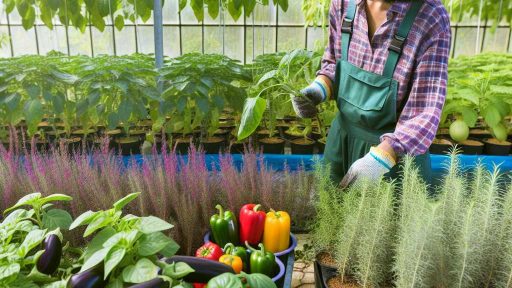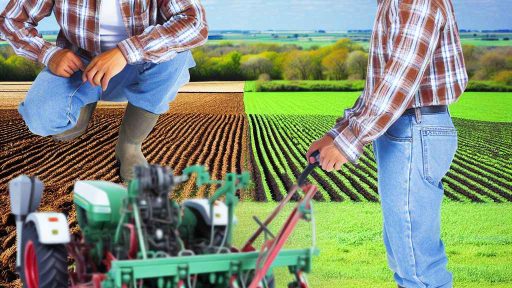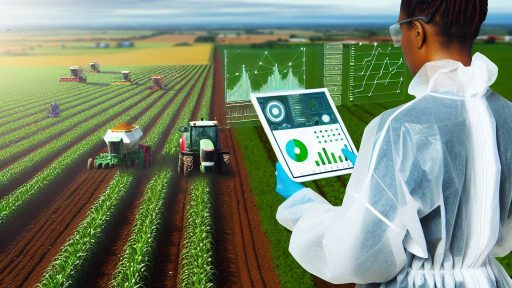Introduction to Greenhouse Construction and its Importance in Agriculture
Greenhouse construction plays a vital role in modern agriculture.
This method allows farmers to grow crops year-round.
Additionally, greenhouses create a controlled environment for plants.
This control enhances growth rates and produce quality.
Benefits of Greenhouse Farming
First, greenhouses protect plants from harsh weather conditions.
This protection reduces crop loss during storms or frost.
Moreover, greenhouses help in optimizing resource use.
Farmers can regulate temperature, humidity, and light levels.
Maximizing Crop Yield
Greenhouses can significantly increase crop yields.
By extending the growing season, farmers can harvest multiple times a year.
This approach meets the growing demand for fresh produce.
Furthermore, greenhouse farming mitigates pest issues.
It limits pest access while allowing beneficial insects to thrive.
Economic Advantages for Agricultural Land Buyers
Investing in greenhouse construction presents many economic benefits.
First, it allows farmers to produce premium quality crops.
Transform Your Agribusiness
Unlock your farm's potential with expert advice tailored to your needs. Get actionable steps that drive real results.
Get StartedThese crops can command higher market prices.
Furthermore, greenhouse farming can reduce reliance on pesticides.
This approach cuts costs and promotes sustainability.
Future Directions in Greenhouse Agriculture
The future of agriculture lies in innovative methods like greenhouse construction.
With climate change affecting traditional farming, adaptation is essential.
Greenhouses offer a solution that balances profitability and sustainability.
As technology advances, greenhouse designs will continue to evolve.
Investors and land buyers should consider these benefits seriously.
Key Factors to Consider When Choosing a Greenhouse Type
Purpose of the Greenhouse
Identify the primary purpose of your greenhouse.
Different plants require different growing environments.
Some may focus on vegetables, while others cater to flowers.
Understanding your goals will guide your choice.
Climate and Location
Analyze the climate conditions in your area.
Temperature extremes can affect greenhouse efficiency.
Consider wind patterns, rainfall, and sunlight exposure.
Your location dictates the materials best suited for your greenhouse.
Size and Layout
Determine the optimal size based on your land and needs.
A larger greenhouse allows for a wider variety of plants.
However, it requires more resources and maintenance.
Plan the layout to ensure accessibility and space efficiency.
Material Options
Choose materials that fit your climate and budget.
Common greenhouse materials include glass, polycarbonate, and polyethylene.
Glass offers excellent light transmission but is costly.
Polyethylene is affordable and easy to replace.
Showcase Your Farming Business
Publish your professional farming services profile on our blog for a one-time fee of $200 and reach a dedicated audience of farmers and agribusiness owners.
Publish Your ProfileVentilation and Temperature Control
Incorporate proper ventilation for temperature regulation.
Good airflow prevents overheating and humidity buildup.
Consider options such as roof vents, side vents, or exhaust fans.
Automated systems enhance efficiency and ease of use.
Budget and Maintenance
Set a realistic budget for construction and maintenance.
Consider both initial investment and long-term costs.
Choose a design that aligns with your financial capabilities.
Regular upkeep is essential for optimal greenhouse performance.
Regulatory Requirements
Check local regulations before proceeding with construction.
Some areas require permits for greenhouse installations.
Compliance with zoning laws helps avoid future complications.
Consult with local authorities for specific guidelines.
Assessing Site Location and Conditions for Optimal Greenhouse Placement
Understanding Site Selection
Choosing the right location is crucial for greenhouse success.
The site must provide adequate sunlight exposure throughout the day.
Additionally, consider the accessibility of water sources for irrigation.
Soil quality should also be assessed to ensure healthy plant growth.
Evaluating Sunlight Exposure
Sunlight greatly influences plant growth within a greenhouse.
Monitor the path of the sun across different seasons.
Select a location that avoids shading from trees or buildings.
Moreover, consider using light-reflecting materials to enhance light levels.
Water Access and Drainage
Water availability is fundamental to successful greenhouse operations.
Ensure your site has access to a reliable water source.
Evaluate soil drainage to prevent water logging issues.
Plan for proper drainage systems to manage excess water effectively.
Climate Considerations
Your region’s climate significantly affects greenhouse conditions.
Research local weather patterns before choosing a location.
Consider the average temperatures and seasonal variations.
In colder regions, plan for additional heating solutions within the greenhouse.
Proximity to Infrastructure
Location near essential infrastructure enhances operational efficiency.
Evaluate proximity to roads, markets, and suppliers.
Easy access reduces transportation costs and improves logistics.
Moreover, consider distance to power sources for electrical needs.
Local Regulations and Zoning Laws
Before proceeding, familiarize yourself with local zoning laws.
Verify if your chosen site is designated for agricultural use.
Understand any restrictions regarding greenhouse construction.
Engage with local authorities to acquire necessary permits.
See Related Content: Crop Disease Management for Organic Farm Investors
Selecting Suitable Materials for Greenhouse Construction
Importance of Material Selection
Choosing the right materials is crucial for greenhouse durability and effectiveness.
Quality materials can enhance plant growth and reduce maintenance costs.
Additionally, they can influence the overall energy efficiency of the structure.
Showcase Your Farming Business
Publish your professional farming services profile on our blog for a one-time fee of $200 and reach a dedicated audience of farmers and agribusiness owners.
Publish Your ProfileTypes of Materials
Greenhouse structures typically use various materials for frames and coverings.
Each material has its own set of benefits and drawbacks.
Frame Materials
Steel is a common choice due to its strength and longevity.
Aluminum is lighter and resistant to rust, making it an excellent alternative.
Wood offers aesthetics and insulation but requires more maintenance.
Covering Materials
Polyethylene is a popular covering option because it is cost-effective and lightweight.
Glass provides superior light transmission, although it can be more expensive.
Polycarbonate panels offer excellent insulation and impact resistance.
Environmental Considerations
Consideration of environmental impact is essential in material selection.
Sustainable options help support eco-friendly greenhouse practices.
Locally sourced materials can reduce transportation emissions.
Cost Considerations
Cost often influences material selection for greenhouse construction.
Compare the initial costs with long-term maintenance and energy expenses.
Investing in higher-quality materials may yield savings over time.
Consulting Experts
Seeking advice from experienced builders can be invaluable.
Professionals can provide insights tailored to specific climates and crops.
Furthermore, they can recommend materials that meet local building codes.
Discover More: Greenhouse Cultivation for Hydroponic and Soil-Based Farming
Regulatory Requirements and Permits for Building Greenhouses
Understanding Local Regulations
Local regulations often dictate greenhouse construction standards.
Municipalities may have specific zoning laws to consider.
Always check your city or county’s regulations first.
This step ensures compliance with local building codes.
Obtaining Necessary Permits
Securing the right permits is crucial for greenhouse construction.
Typically, you may need building and zoning permits.
Some areas require special environmental permits too.
Contact your local permit office for detailed information.
Environmental Compliance
Greenhouses must meet environmental regulations.
Check for any restrictions related to land use.
Waste management plans may be required for operations.
Ensuring proper drainage helps prevent environmental damage.
Health and Safety Standards
Adhering to health and safety regulations is essential.
Work with contractors who understand these standards.
Proper ventilation and emergency exits must be included.
Inspectors may evaluate greenhouses for compliance regularly.
Consulting with Professionals
It’s advisable to consult with professionals during planning.
Architects and contractors can provide valuable insights.
Environmental consultants can guide compliance efforts.
Legal experts may help navigate complex regulations.
Staying Informed About Changes
Regulatory requirements can change frequently.
Stay updated on local and state regulations regularly.
Showcase Your Farming Business
Publish your professional farming services profile on our blog for a one-time fee of $200 and reach a dedicated audience of farmers and agribusiness owners.
Publish Your ProfileJoin local agricultural associations for the latest news.
Attend workshops and seminars focused on agricultural compliance.
See Related Content: Best Soil Conservation Techniques for Sustainable Farmland Use

Cost Analysis: Budgeting for Greenhouse Construction and Maintenance
Understanding Initial Costs
Greenhouse construction begins with understanding the initial costs involved.
Site preparation is a crucial first step.
This includes clearing the land and leveling the ground.
Additionally, you must factor in permits and local regulations.
Choosing the right materials also affects your budget.
For instance, glass greenhouses are generally more expensive than polycarbonate options.
Labor costs can vary significantly based on your location.
It’s wise to get multiple quotes from contractors.
Considering all these elements helps you determine your financial needs better.
Ongoing Maintenance Expenses
Maintenance is a vital part of greenhouse ownership.
Regular upkeep ensures longevity and productivity.
Climate control systems require routine checks and repairs.
This includes heating, ventilation, and irrigation systems.
Furthermore, plants need consistent care to thrive.
Labor costs for skilled employees can impact your annual budget.
Additionally, consider costs for pest control and fertilizers.
These expenses can vary seasonally and must be planned accordingly.
Ultimately, understanding these costs helps you maintain a healthy operation.
Costs of Upgrades and Improvements
Investing in upgrades can significantly improve productivity.
Advanced technologies like automated systems increase efficiency.
However, these technologies come with their own set of costs.
For example, upgrading to LED lighting might require an initial investment.
Despite this, energy savings can offset costs in the long run.
Additionally, consider expanding your greenhouse space over time.
Planning for future expansions should be part of your initial budget.
Overall, weighing these options ensures better financial management.
Financial Planning Strategies
Establishing a detailed budget is essential for success.
Break down your costs into specific categories.
This allows for better tracking and adjustments over time.
Using software tools can facilitate budgeting and forecasting.
Moreover, seek guidance from financial advisors or agricultural specialists.
They can provide insights tailored to your specific needs.
Lastly, remain flexible and open to modifying your plans.
Adapt your budget as circumstances change in the agricultural market.
Explore Further: Bridging Precision Agriculture And Real Estate A New Approach To Crop Management
Sustainable Practices in Greenhouse Design and Operation
Choosing Efficient Materials
Using sustainable materials is crucial for greenhouse construction.
Opt for recycled materials whenever possible.
Showcase Your Farming Business
Publish your professional farming services profile on our blog for a one-time fee of $200 and reach a dedicated audience of farmers and agribusiness owners.
Publish Your ProfileThis reduces waste and lowers your carbon footprint.
Consider materials that offer durability and insulation.
High-quality glass or polycarbonate panels are excellent options.
Energy Efficiency
Implementing energy-efficient systems significantly affects greenhouse operation.
Use energy-efficient lighting to reduce electricity usage.
Solar panels can provide a renewable energy source for your greenhouse.
Moreover, advanced climate control systems can optimize energy consumption.
Insulation techniques further enhance energy retention within the structure.
Water Conservation Techniques
Water conservation is an essential practice in sustainable agriculture.
Incorporate rainwater harvesting systems to collect natural precipitation.
Drip irrigation systems minimize water waste while ensuring plant hydration.
Additionally, utilize moisture sensors to control irrigation schedules.
This approach enhances plant growth while conserving resources.
Integrated Pest Management
Employing integrated pest management (IPM) reduces chemical use.
Natural predators can help control pest populations effectively.
Introduce beneficial insects, like ladybugs, into your greenhouse.
Furthermore, monitor pest and disease levels regularly for timely interventions.
IPM encourages a balanced ecosystem and healthier plants.
Composting and Soil Health
Composting organic waste enriches your greenhouse soil.
This practice reduces the need for synthetic fertilizers.
Maintain soil health by regularly adding compost to your planting beds.
Furthermore, crop rotation enhances nutrient diversity.
This promotes a robust growing environment and biodiversity.
Innovative Technologies Enhancing Greenhouse Efficiency and Yield
Smart Climate Control Systems
Smart climate control systems optimize temperature and humidity levels effectively.
They use sensors to monitor environmental conditions continuously.
Furthermore, these systems adjust settings automatically for optimal growth.
As a result, plants thrive in controlled environments.
Hydroponics and Aquaponics Integration
Hydroponics allows plants to grow without soil, using nutrient-rich water instead.
It significantly reduces water usage compared to traditional farming.
Moreover, aquaponics combines hydroponics with aquaculture for a sustainable ecosystem.
This synergy enhances productivity by utilizing fish waste as fertilizer.
LED Lighting Innovations
LED grow lights provide the necessary spectrum for photosynthesis.
They consume less energy and generate less heat than traditional lights.
As a result, they lower operational costs while improving crop yields.
Moreover, adjustable light conditions can cater to specific plant needs.
Automation and Robotics
Automation streamlines many greenhouse processes, reducing labor costs.
Robots can handle tasks such as planting, watering, and harvesting.
This technology allows farmers to focus on critical decision-making.
Additionally, drones can monitor crop health from above efficiently.
Data Analytics and AI
Data analytics provides insights into crop performance and resource management.
Showcase Your Farming Business
Publish your professional farming services profile on our blog for a one-time fee of $200 and reach a dedicated audience of farmers and agribusiness owners.
Publish Your ProfileArtificial intelligence enhances decision-making processes in real-time.
These technologies can predict pest outbreaks and optimize irrigation practices.
Consequently, farmers can make informed choices to enhance yield.
Sustainable Materials for Greenhouse Construction
Using recycled and sustainable materials reduces the environmental footprint.
Moreover, these materials improve energy efficiency throughout the greenhouse’s lifespan.
Innovative designs integrate passive solar heating for additional energy savings.
This approach promotes eco-friendly greenhouse operations significantly.
Additional Resources
Grant Opportunities | Washington State Department of Agriculture




